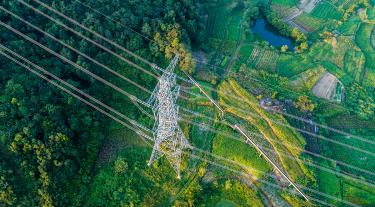The latest Smart Systems and Flexibility Plan, updated from the 2017 version, was released last week. It was encouraging to see close alignment with the recent Flexibility in Great Britain analysis we led with Professor Goran Strbac from Imperial College London and published earlier this year.
Importantly, the Plan echoed the urgency and opportunity of early action needed across the system. It reinforced the need to invest in flexibility now in order to deliver a more cost effective, low carbon energy system in the future. Flexibility is key to realising the level of deep power sector decarbonisation needed to achieve the sixth Carbon Budget.
Investing in flexibility is a low regret option. There is an expectation that the need for low carbon flexibility will be significant in all decarbonisation pathways, and it will be delivered through a portfolio of technologies including storage, demand side response and interconnection. Maximum value can be unlocked from an integrated energy system – making use of flexibility across power, heat and transport will minimise total costs.
Demand side response is an important part of the flexibility portfolio and consumers need the right tools and protections in place to engage with the market confidently. Consumer flexibility will help reduce the amount of generation and network capacity needed to meet net zero targets. As referenced in the Plan, our modelling showed that a system that doesn’t deploy demand side flexibility could cost around £5bn more per annum in 2050.
As the energy system becomes increasingly decentralised, it is vital that different network operators and flexibility providers work together to optimise the system as a whole. Again, our work which found that local sources of flexibility can provide significant value to both local and national markets, was cited, but this will only happen if there is sufficient investment and co-ordination with national markets.
Finally, innovation is still required across both technology development and in business models & market structures. BEIS are investing at least £100 million in flexibility innovation through the NZIP (Net Zero Innovation Portfolio) programme and testing new market signals through the Alternative Energy Markets (AEM) programme. In particular, innovation in large-scale, long duration storage is necessary to reduce reliance on fossil fuelled power stations for energy security.
Energy digitalisation strategy
The UK government also released the UK’s first Energy Digitalisation Strategy alongside the updated Smart Systems and Flexibility Plan, which is a call to action to create the data management frameworks required to enable decarbonisation. The Strategy highlights the fact that decarbonisation will not be achieved without a digitalised energy system.
Aligned with the Flexibility in Great Britain analysis, the Strategy also advocates a whole systems approach and highlights current practices which will hamper progress in this area:
“All parts of the energy system – demand, supply, markets, networks – need digitalising to create a more efficient ‘whole system approach’, but our current services are underdeveloped and inconsistent. A lack of incentives and a culture rooted in keeping network and asset information private have perpetuated an undervaluation or overprotection of data, leading to inaccurate and incomplete datasets, data silos and unnecessary data hoarding. These can act as blockers to data exchange. The sector has already taken good strides to overcome these barriers, but much more needs to be done.”
The need for data sharing infrastructure to be treated as a public asset and to ensure all stakeholders are incentivised to play their part in establishing and contributing to it was emphasised. Shared digital infrastructure will also facilitate better data exchange and utilisation, improving the level of visibility of energy system assets at all scales, vital to enabling interoperability.
A smart and flexible system can only be enabled by digitalisation of the energy system.
The full value of flexibility is unlocked through real time coordination of assets to deliver whole system benefit. For example, we see the coordination between smart electric vehicle charging, vehicle to grid (V2G) and thermal storage in heat networks working together to minimise demand during periods of system stress. These assets sit at different levels in the energy system and also across vectors and between different ownership boundaries. Thus, a critical consideration to enable this future is the need for digitalisation across the energy system to allow information sharing, monitoring and coordination between assets and organisations at this scale. Building-in interoperability and cyber security into these plans will be important. This will minimise system risks, retain consumer confidence and trust, and allow novel business models to flourish.
In terms of domestic demand side flexibility, one of the barriers highlighted in the Flexibility in Great Britain report was consumer willingness and ability to engage in the flexibility market. Only 21% of households switched supplier in 2019 despite the potential for significant financial consumer benefits1, and as the flexibility market develops it will become increasingly complex for consumers to compare different energy tariffs or incentives. To help tackle this issue, the Carbon Trust supported the delivery of the Smarter Tariff, Smarter Comparison project which focused on the development of an Open Source tool to allow consumers to see how much money they could save across different time-of-use energy tariffs, based on their actual energy consumption recorded by their smart meter.
At the Carbon Trust we are committed to accelerating the transition to a smart, flexible, digitalised energy systems. If you would like to talk to our experts about our work in this area, please contact us.
1. Energy UK, 2021 https://www.energy-uk.org.uk/publication. html?task=file.download&id=7804


